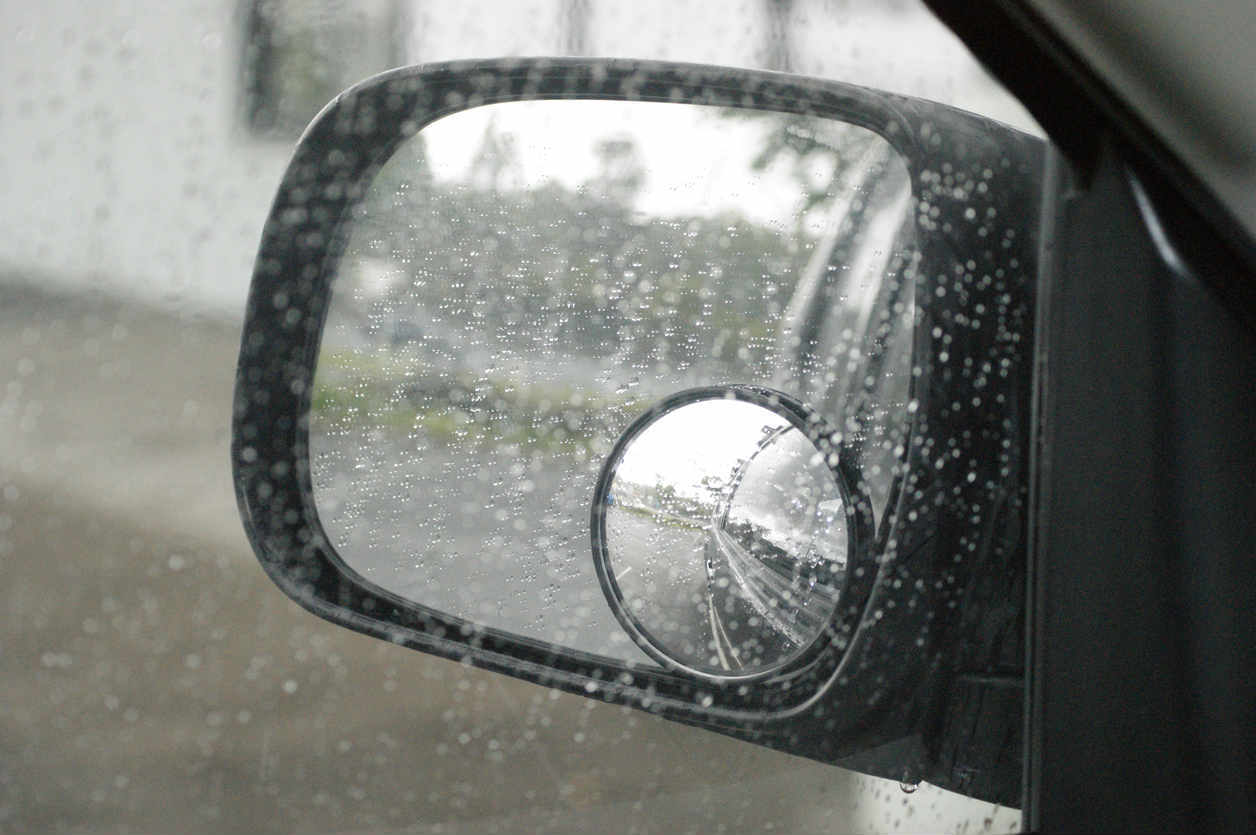A large number of accidents happen because drivers fail to check their blind spots before they make turns or back up.

Car accidents can occur for a wide variety of reasons, ranging from driver negligence to defective vehicle components. A large number of accidents happen because drivers fail to check their blind spots before they make turns, back up or make similar other maneuvers while driving. Vehicle blind spots can cause various different types of accidents and injuries. In fact, some reports show that blind spots are responsible for as many as 50 children being backed over each week. Of these, 2 children succumb to their injuries
They not only pose a threat to drivers and their passengers, but they can also result in serious or fatal injuries to other drivers, motorcyclists, bicyclists, and pedestrians.
The National Highway Traffic Safety Administration (NHTSA) reports that nearly 840,000 blind spot car accidents happen in the United States each year. This means, annually, there are over 2,300 blind spot car accidents each day, and nearly 2 accidents each minute.
Most blind spot car accidents are caused by human error
Although various factors can contribute to the occurrence of a blind spot car accident, in most cases, human error is involved. A large percentage of these accidents are caused by drivers who simply failed to check their blind spots or mirrors before moving their vehicles. It is also not uncommon for motorists to be careless and cause these accidents. Blind spot accidents can occur if the driver is:
- Texting or otherwise distracted
- Fatigued
- Intoxicated
- Reckless or aggressive
Some other factors that can increase the likelihood of blind spot car accidents include:
- Insufficient nighttime lighting, which makes it difficult for the drivers to see if there are vehicles or people in their blind spots
- Inexperienced drivers may fail to yield the right-of-way to other drivers, bicyclists, pedestrians, etc.
- Other drivers may drive with broken lights or without their lights on at night, which makes it difficult for other drivers to spot them in their mirrors
Identifying and dealing with blind spots
A blind spot is actually a visual impairment that can be caused by factors within the vehicle or outside surroundings. Some driving situations in which not monitoring blind spots can prove dangerous include:
- Intersections and crosswalks: Roadside signs, big trees, bus shelters, and other obstructions can make it impossible to see traffic and pedestrians when you are approaching a crosswalk or intersection. Keep looking around as you travel along because these blind spots shift as your line of vision changes.
- Lane changes: According to NHTSA, 18 percent of the crashes take place during lane changes. In order to avoid sideswipe accidents, you should be fully aware of the traffic in the lane beside you. Make sure you check the blind spots before switching lanes.
- Oncoming traffic: When making a left-hand turn across two lanes of oncoming traffic, you should double check the blind spots or you may have to suddenly slam your brakes when a vehicle unexpectedly emerges in the outer approaching lane.
- Backing up: Visual impairment due to rear blind spots are responsible for causing 18,000 injuries and 300 fatalities each year. The rear view from the driver’s seat depends on various factors including the size and type of your vehicle, and whether it has a high rear deck, narrow rear window or thick pillars. A backup camera can help prevent such accidents.
Vehicles that have large blind zones
A blind spot or a blind zone is the area that the driver cannot see from their seat. Over the years, it has been observed that rather than making the blind spots smaller, and hence, the vehicles safer, the blind zones have actually become larger. There are many large vehicles on the roads, which have much bigger blind spots compared to passenger cars. Pickups and SUVs are becoming increasingly popular with their modern styling features such as high rear decks and short rear glass. While these features render aesthetic appeal to the vehicle, they also create dangerous blind zones that can lead to an accident.
Front end blind zones
While most of us think that blind zones exist only in the rear or side of the vehicle, the reality is that in some large vehicles the driver is so high off the ground that they have dangerously large blind spots near the front of their vehicle as well. These blind spots can cause serious problems in traffic situations such as intersections, road crossings, and roundabouts. There are various factors that can create large blind zones in the front of the vehicle, these include:
- Height and width of the vehicle
- Distance between the driver and the pillars on both sides of the windshield
- The angle of the windshield
- The thickness of these pillars
- Height of the driver in relation to the dashboard
How can we prevent accidents caused by large blind spots?
Each year, a large number of accidents occur due to blind spots, however, there is still no federal standard for rear visibility. It is important that drivers of the vehicles with large blind spots are extra careful about vehicles driving around them, and the other drivers should also be careful when driving around a large vehicle’s blind zone.
